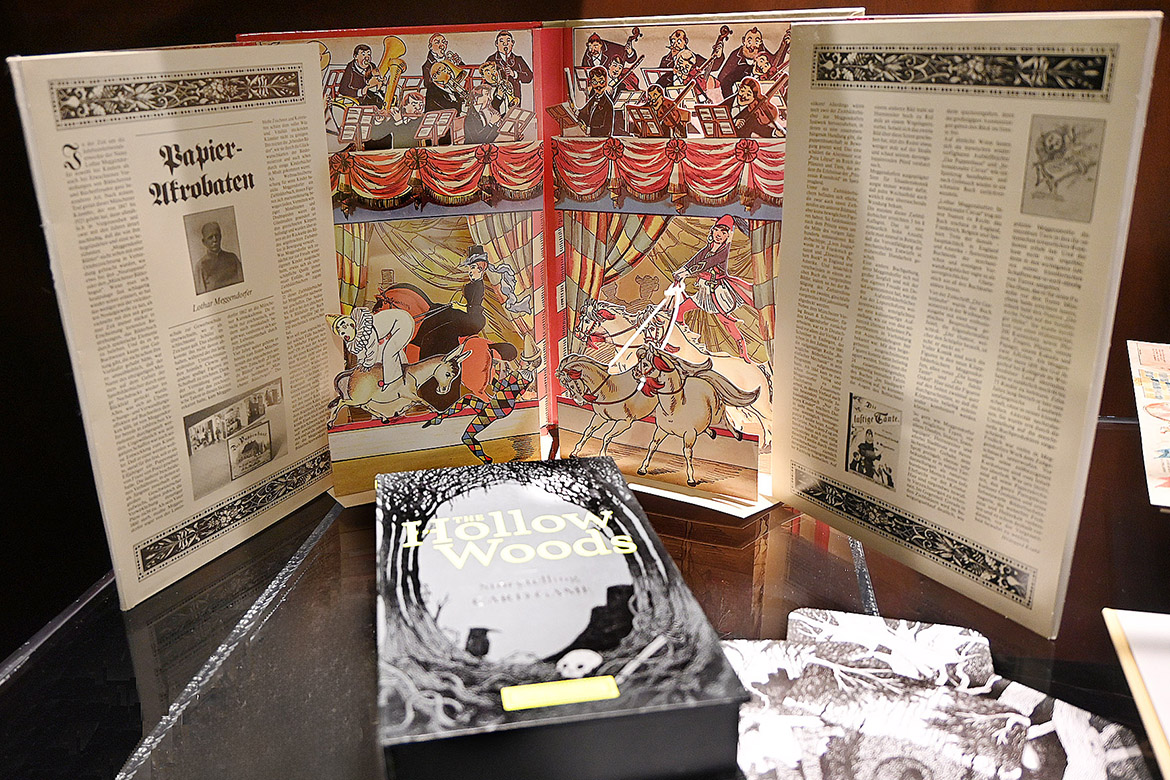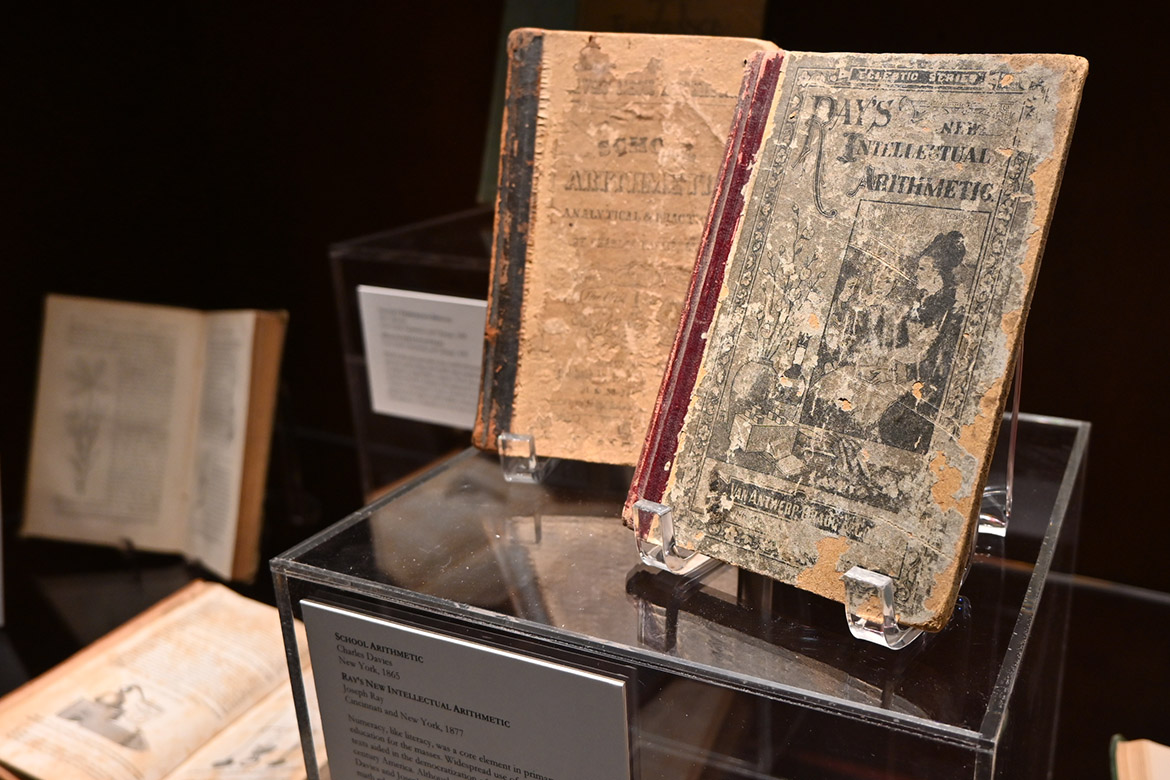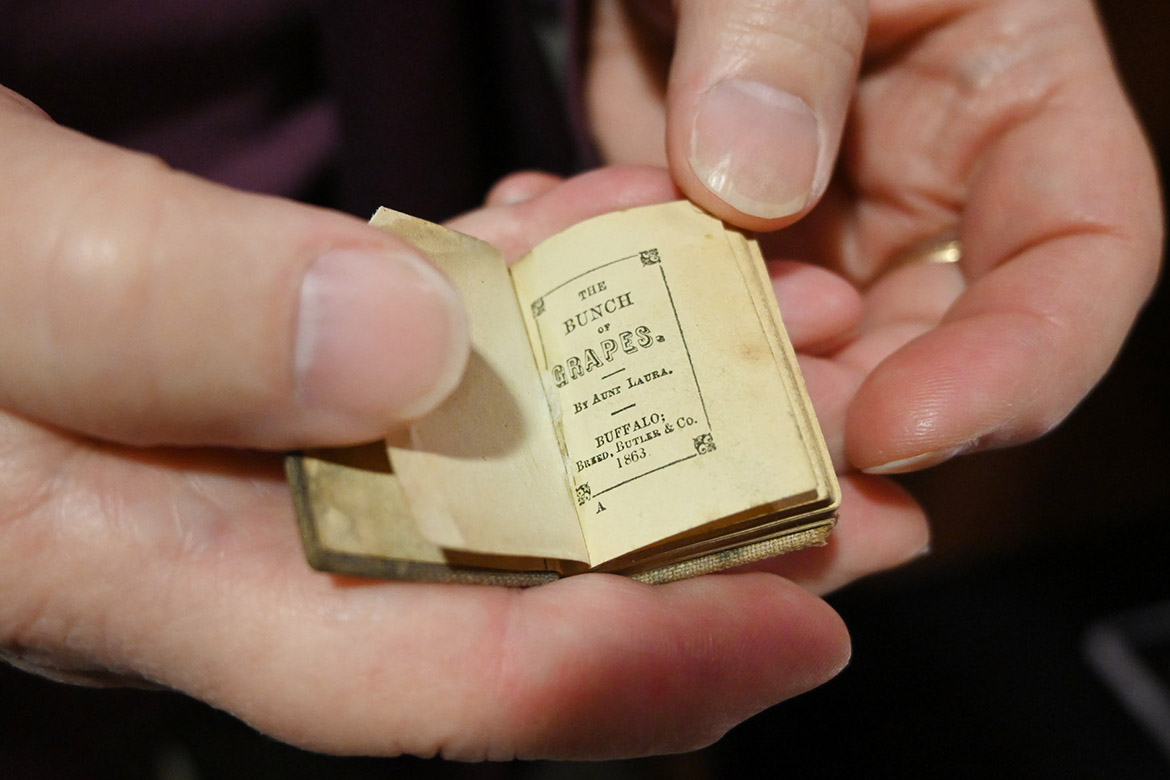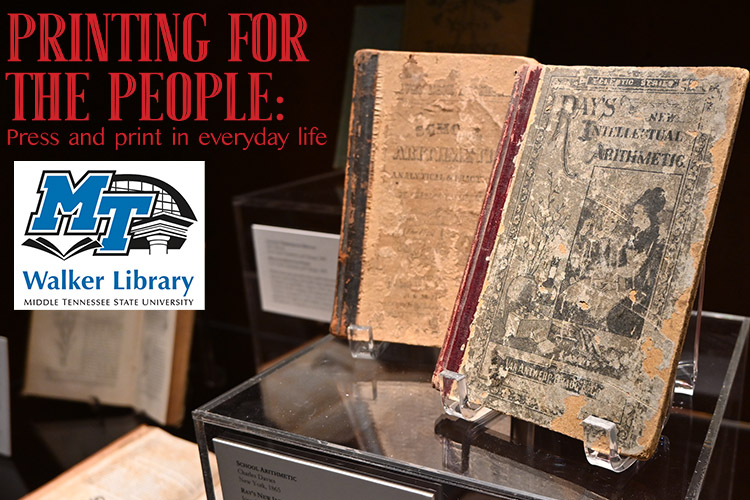Special Collections at Middle Tennessee State University’s James E. Walker Library is celebrating its 25th anniversary with an open house March 12 and two exhibits highlighting the history of the department and the evolution of printing.

Special Collections was established in 1999 when Walker Library opened for use and features carefully procured collections of rare books and materials. A small room at the front of Special Collections displays memorabilia related to its history and will be on display through the end of 2024.
The “Printing for the People: Press and Print in Everyday Life” exhibit will be on display until the end of the semester and features books, correspondence, stamps and advertising items.
“The exhibit takes you through different aspects of life, with the idea of showcasing how important print has been in people’s lives, and what kinds of material and ephemera you come across,” explained Susan Martin, Special Collections librarian.
Most people associate printing with books, said Susan Hanson, Special Collections curator. But printing led to so much more and infiltrated many aspects of life. The exhibit showcases some of those areas that were affected by innovations in printing.

“We are also trying to show print came out in a variety of forms, from the simple trading cards and flyers to blurbs and small catalogs. Print reached and shaped countless aspects of life.”
Featured topics include:
- Education
- Leisure
- Civic Culture
- Domestic/home
- Correspondence
- Business
- Religion
Printing extends beyond books
By the 19th century, increased mechanization during the Industrial Revolution made it possible to churn out print runs by the millions. Around the same time, magazines and journals became popular, and newspapers and periodicals spread information across great distances.
“The cost of paper went down, and the quality of paper went down. But the decrease in cost through mechanization offered materials at a lower price point,” Hanson said.

There’s a huge correlation with printing and the advancement of education, which the exhibit touches on with a variety of examples.
“It seems obvious that print, coming up to the current period, is pretty key in education. You’ve got to have textbooks,” Hanson said. “But we’ve also tried to draw historical points.”
Being able to mass-produce textbooks led to standardization throughout the educational complex.
“Textbooks were published in the millions. So it’s not just a one-on-one relationship in a single classroom. But nationwide, you have the possibility, through print, of disseminating the same version of a textbook across the country.”
Martin, a fan and aficionado of philatelic (stamps) materials, focused on correspondence and letter writing that were changed by printing through the humble self-adhesive stamp.
Seven years after Great Britain introduced the Penny Black self-adhesive stamp, Cave Johnson, who was postmaster general under the presidential administration of fellow Tennessean James K. Polk, lobbied for the pre-paid self-adhesive stamp.
“Letter writing exploded. … Suddenly everyone could write each other. You had a large mass of folks communicating,” Martin explained. “The exchange of ideas became much more common for average people, not just the more educated. And people were exchanging ideas on national and global level.”
Standardization crept into the business sector, too, through invoices, catalogs, product branding and the implementation of logos — many of which remain recognizable today, such as Coca-Cola and Levi Strauss & Co.

“The Sears catalog was a lifeline across the country, especially in rural areas. The same folks living on a farm in the Ozarks could buy the same things as somebody in Chicago was buying. That opened up to goods and services, which also affected transportation,” Martin explained.
The exhibit features some business “swag” as well as advertisements, such as a card with a moving apparatus demonstrated how a hospital call button worked, a sales sample for encyclopedias and petal fans with business logos.
An aspect of the printing exhibit that is an underlying theme is the near extinction of some items.
“One of the things that interests me is the idea of what things have gone away,” Hanson said. “We still have advertising in paper form, like catalogs, whereas other things like phone directories, city directories and even the travel guidebooks have largely disappeared. It’s interesting what continues and what gets replaced. But I think it’s important to show people what went before.”

Silver anniversary celebration
Special Collections is located on the fourth floor of Walker Library, 1611 Alumni Drive. Each semester the department creates a new exhibition. Hours are open to the public from 8:30 a.m. to 4:30 p.m. Monday through Friday.
From 11 a.m. to 1 p.m. March 12 Special Collections will host an open house to spotlight both exhibits and celebrate the silver anniversary.
Off-campus visitors viewing the exhibit should obtain a special one-day permit from MTSU’s Office of Parking and Transportation at www.mtsu.edu/parking/. Free parking is available in the Rutherford Boulevard parking lots, with free Raider Xpress shuttle service running periodically to the interior of campus.
— Nancy DeGennaro (Nancy.DeGennaro@jah2gktsu.edu)


COMMENTS ARE OFF THIS POST